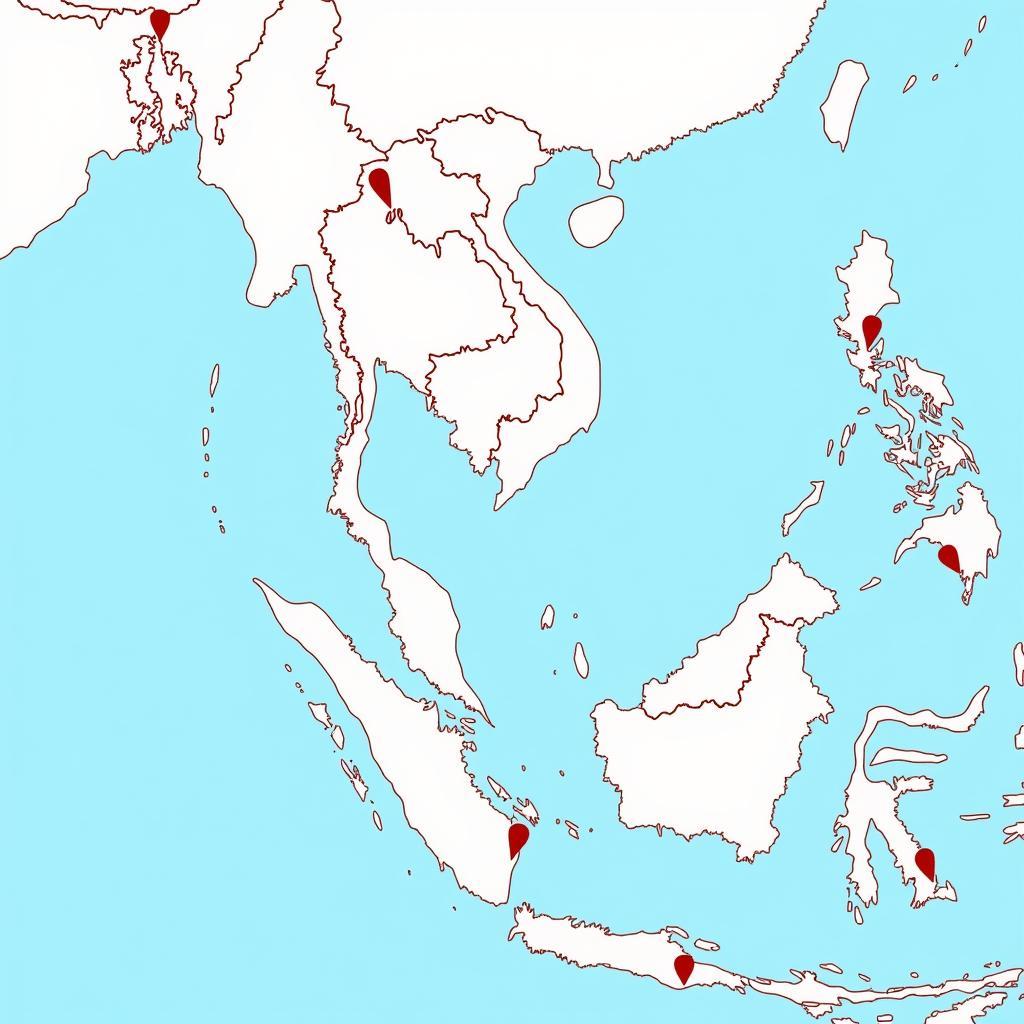ASEAN SPEZs, or Special Economic Zones, are designated areas within ASEAN member states designed to attract foreign direct investment and stimulate economic growth. These zones offer a range of incentives for businesses, including tax breaks, streamlined regulations, and improved infrastructure, making them attractive hubs for manufacturing, logistics, and other industries.
 Map of ASEAN Special Economic Zones
Map of ASEAN Special Economic Zones
The Power of ASEAN SPEZs: Driving Economic Growth and Integration
ASEAN SPEZs play a crucial role in promoting economic development and regional integration within Southeast Asia. By offering a conducive business environment, these zones act as catalysts for attracting investments, generating employment opportunities, and fostering technological transfer.
One key aspect of ASEAN SPEZs is their focus on specific industries. This targeted approach allows countries to leverage their comparative advantages and develop specialized economic clusters. For example, Thailand has positioned itself as a hub for automotive manufacturing, while Malaysia has focused on electronics and digital technologies.
 Modern Industrial Park within an ASEAN Special Economic Zone
Modern Industrial Park within an ASEAN Special Economic Zone
Advantages of Setting Up in an ASEAN SPEZ
The allure of ASEAN SPEZs for businesses is undeniable. Here are some of the key advantages they offer:
- Tax Incentives: Many SPEZs offer generous tax holidays, reduced corporate income tax rates, and exemptions from import/export duties, significantly lowering operational costs.
- Simplified Regulations: Streamlined administrative procedures, including faster business registration and customs clearance, make it easier for companies to operate efficiently.
- Improved Infrastructure: ASEAN SPEZs typically boast modern infrastructure, including reliable power supply, high-speed internet connectivity, and well-maintained roads and ports, facilitating smooth business operations.
- Access to Skilled Labor: Southeast Asia has a young and growing workforce. SPEZs often provide access to training programs and initiatives aimed at developing a skilled labor pool.
Challenges and Future Directions for ASEAN SPEZs
While ASEAN SPEZs hold immense potential, some challenges remain:
- Infrastructure Gaps: Despite improvements, infrastructure development in some SPEZs, particularly in less developed countries, needs further enhancement to meet the demands of modern businesses.
- Regulatory Harmonization: While efforts are underway to harmonize regulations across ASEAN, discrepancies between national and SPEZ-specific rules can create complexities for businesses operating regionally.
- Environmental Sustainability: Balancing rapid economic development with environmental protection is crucial. Ensuring sustainable practices within SPEZs is vital for long-term growth and the well-being of local communities.
Conclusion: ASEAN SPEZs – Gateways to Southeast Asian Growth
ASEAN SPEZs are instrumental in driving economic growth, attracting foreign investment, and fostering regional integration within Southeast Asia. By offering a conducive business environment and strategic advantages, these zones provide significant opportunities for businesses looking to expand their operations in one of the world’s most dynamic regions.

